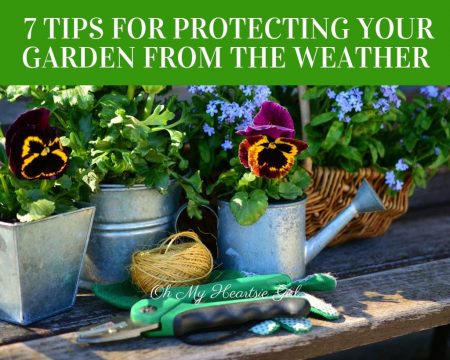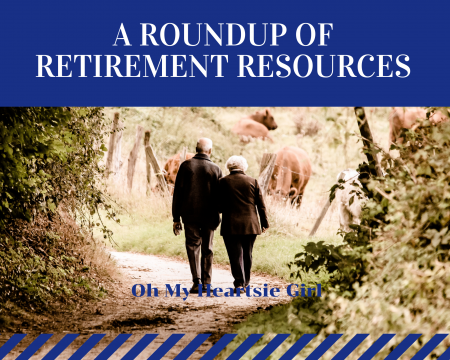 For those of us lucky enough to live in a continent with all four seasons, getting outdoors in all weathers is of top concern. One of the best ways to make the most of your own backyard is through gardening. Setting up a garden for your family, or yourself means getting to know your outdoor environment and familiarizing yourself with DIY tools and tricks. With a wide variety of weather to worry about, new plants are at risk of being flooded out, while certain fruits and vegetables could dry out in hot summers if they don’t get enough shade.
For those of us lucky enough to live in a continent with all four seasons, getting outdoors in all weathers is of top concern. One of the best ways to make the most of your own backyard is through gardening. Setting up a garden for your family, or yourself means getting to know your outdoor environment and familiarizing yourself with DIY tools and tricks. With a wide variety of weather to worry about, new plants are at risk of being flooded out, while certain fruits and vegetables could dry out in hot summers if they don’t get enough shade.
Properly weatherproofing your garden takes the right tools and some planning. With these tips, you’ll be able to protect your garden, as it grows.
Know When To Prune
Pruning back trees and bushes helps you control how much shade there is in your yard. If you’ve got delicate flowers in your yard, planting them next to large, thick trees protect them from wind, rain, and frost. If you’ve got plants that need a lot of sunlight or space, pruning back the larger trees is a good way to make better use of sunlight. If you’ve got older trees with complicated root systems, they could be crowding out younger plants as well. You’ll want to use pruning shears on bushes and brush, but a chainsaw often works best for bigger bushes, or old trees. You can use the pieces you’ve pruned in a compost heat, or for firewood. Make sure you do your research into the best chainsaws for firewood, when you need to prune older trees without risking their health. 
Add Wind Barriers
Even if your weather report doesn’t include snow, winter weather like high winds, and frost, can still cause soil erosion. If you can’t raise your beds, adding wind barriers can make the difference. Whether that means sandbags in your flower beds, a rock wall, or staking and tying down young trees or vines, or creating covered beds, your options for wind barriers depends on your space, budget, and weather conditions.
Create Raised Beds
Creating raised flower beds with a rock wall or wooden planks has a variety of benefits for weatherproofing your garden. Raised beds allow you to minimize access for garden pests, and protect against various types of extreme weather. They warm up faster in the spring, making it easier to resist frost. Raised beds are easier to irrigate, so they won’t be exposed to too much or too little water. You can also create beds that are much more portable, which makes it easier to move them when they are crowding out other plants, or if they’re more exposed to cold, wind, and rain.
Build Cold Frames, Or Green Houses
Young plants tend to be the most vulnerable to everything from erosion by excessive rain, to high winds. One solution is to build a cold frame structure, a temporary garden bed to give your tender young winter plants a chance to thrive. There are different ways to construct a cold frame, but ideally, you want a weather-resistant wood treated with copper naphthenate, a good ventilation system (you can get a kit at your local home and garden store) and a sash that slopes southward to maximize exposure to sunlight as the temperature drops. Warm beds, heated with copper wires are another option, and if you’re particularly handy, cold frames equipped with solar panels or a full greenhouse can also help keep your garden toasty in colder weathers, and keep plants healthy. It all depends on your space and budget.
Know Your Plants
If you’re going to garden, you need to know which plants do best in your area, at various times of the year. If you’re in a city, where sidewalk salt is in common use, you’ll want salt-resistant varieties like Russian sage and butterfly weed. If you’re living in an arid climate, choose drought-resistant cacti and succulents. Planting frost-sensitive varieties at the foot of the bigger, hardier plants can also help keep them protected from frost and wind.
Protect Young Trees From Wind And Frost
Planting and shaping smaller trees is a good way to protect your home from the elements, provide shade, and improve the air quality in and around your home. But slim, sapling trees are vulnerable to strong wind and frost, which can kill them before they’ve had a chance to grow the needed root structure. Using stakes and ties to protect young trees and shrubs can help, but a garden fleece can help keep the soil warm and allow the tree to grow.
Toughen Plants Up With Good Mulch
The best defense for hardier winter plants against both frost and the heavy downpour is good mulch. Before winter, take the time to clear away the dead or dying plants, and add them to your compost heap, putting down new, rich compost, and covering with a layer of mulch, woodchips and leaves can help keep hardy plants warm, as well as soaking up excess moisture from heavy rains. A good three-inch layer will protect your garden from anything the winter season could throw at it.
Gardening is a relaxing pastime that can help get you out in the great outdoors in all weathers. But not all plants are created equal, and some may struggle with the more extreme weather patterns, like downpour rains, extreme heat, and humidity, or high winds. With a little DIY know-how, you can learn the tricks and tools to keep your garden thriving all year round.
[…]
What Makes a Good Garden?
Practical Principles of Gardening You Should Learn
This post may contain automatically and manually added affiliate links, which means I might receive a small commission
if you make a purchase using a link at no extra cost to you.

Leisure Arts 15% Senior Discount. Enter promo code: SENIOR
 It feels like it’s the era will never come but trust us, it does. And it comes with a bang.
It feels like it’s the era will never come but trust us, it does. And it comes with a bang.